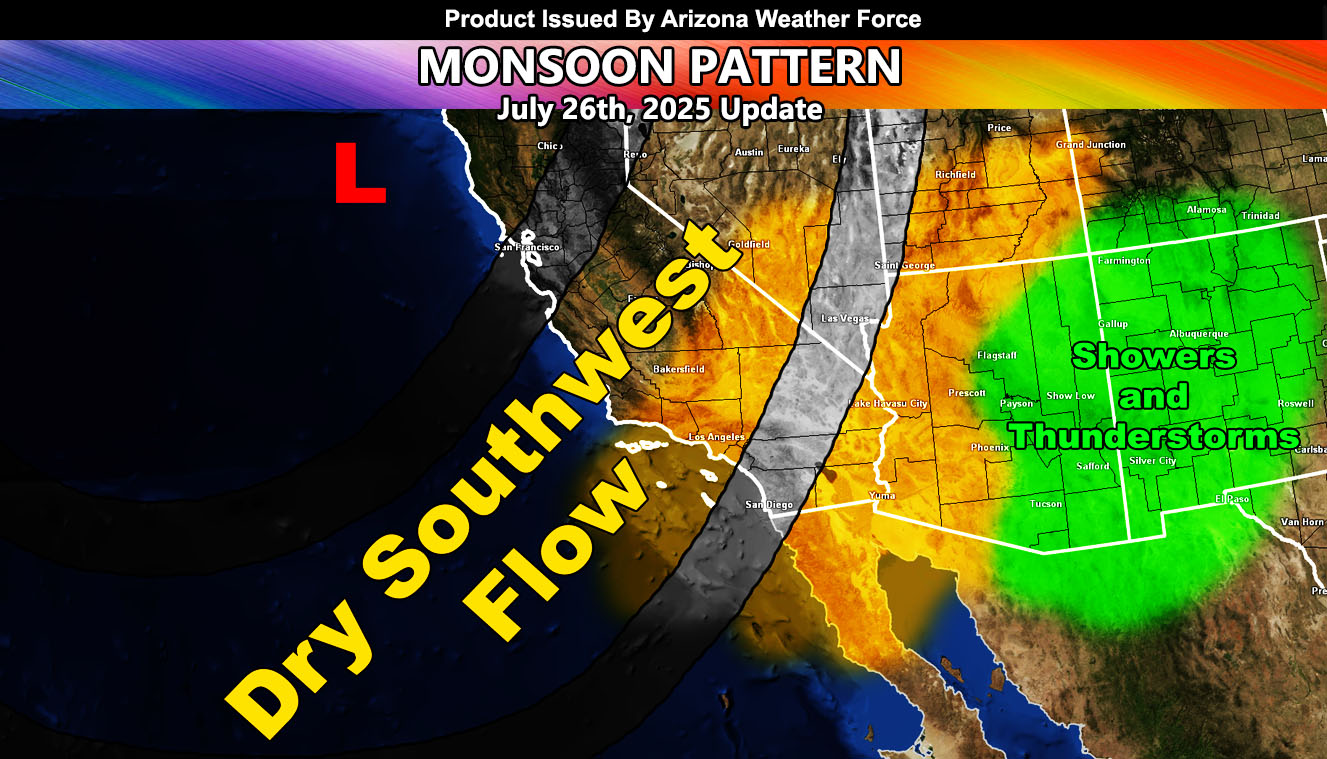Pesky troughs and cutoff lows off the Western Coast of California have split the monsoon pattern in half, so read on …
Rules are going to be simple with future forecasting on here. Since cutoff lows are extremely unpredictable, they can change forecasts, or enhance them. So they key points for this forecast will be as followed. A dry/cold southwest flow will remain for points Central to Western Arizona, which the southeast half of the state sees the rain/storms end month into August. While moisture will be available for most of the state, triggering them is another story. Given this, the normal monsoon affected areas of Southeastern Arizona will be the primary target. The rest of you, well, weather changes, and these cutoff lows are extremely potent this summer as California is way below normal in temperatures as well. Usually this means better fall and winter seasons, but saving that for another time.
To that end, no long range forecast will be given during the monsoon season unless it is 7 and maybe even 5 days out. There is just no way to predict cutoff lows … and I call them mother nature’s wrench in the main system.
So, less western half of the state, more eastern half, especially southeast where the monsoon normally happens. Those of you that think Phoenix is a normal monsoon zone are thinking of Pima, Santa Cruz, and Cochise County, where the monsoon is usually ‘stationed’. The outskirts of that only get lucky a handful of times each year for rain/thunderstorms, some a bit too lucky, as we’ve seen in Buckeye’s forecast zone where you have above normal rainfall in spots this summer from the last flow.
Can this change this season? If the upper level low’s off the Western United States Coast move off, the ridge will shove west and the rest of the state in August can get something. It only takes 100-200 miles of a shove west for it to happen. For now, I’ll play it in the medium and short range of 5 to 7 days before the systems hit.
Your map is in the article …
Raiden Storm
Master General Meteorologist

